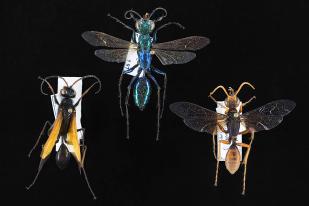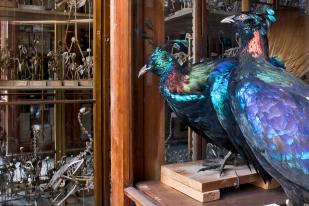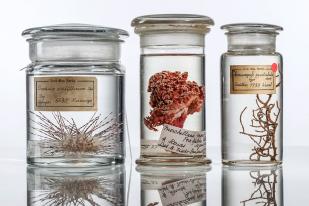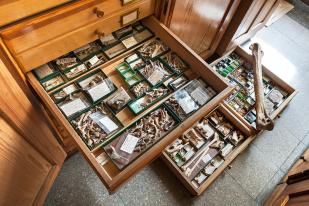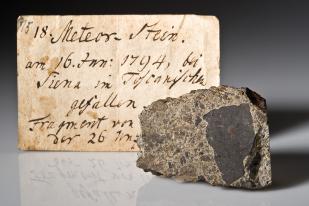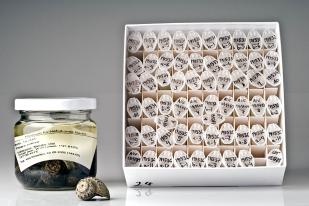Collection
With over 30 million objects, the Museum für Naturkunde Berlin houses the largest natural history collection in Germany. It is the museum's core infrastructure. The collection comprises objects from the time of the origin of the solar system more than 4.5 billion years ago until today and contains a large number of first descriptions of species (type specimens). The objects have been collected since the early 18th century and have often been collected during famous expeditions and by important scientists such as Alexander von Humboldt, Charles Darwin or Adalbert von Chamisso. The collections include skins, antlers, skeletons, eggs, nests, insects, plants, animal voices, tissue & DNA samples, alcohol preserved objects, meteorites, minerals and rocks, fossil animals and plants and associated diaries, literature and notes. They are systematically arranged and recorded. Through centuries of scientific processing, description and intensive research work in Berlin, the objects have acquired great historical, scientific and cultural value. The collection is constantly being developed. Our knowledge on collection preservation and collection management is brought together in the Competence Centre, exchanged in national and international networks and used to further improve our collection development. The collection is available for a wide range of research, from the natural sciences to the arts, humanities and citizen science. The newly established Centre for Integrative Biodiversity Discovery aims to develop efficient and innovative concepts and methods for recording and researching biodiversity. The more in-depth exploration of our collection is an important part of this endeavour.
